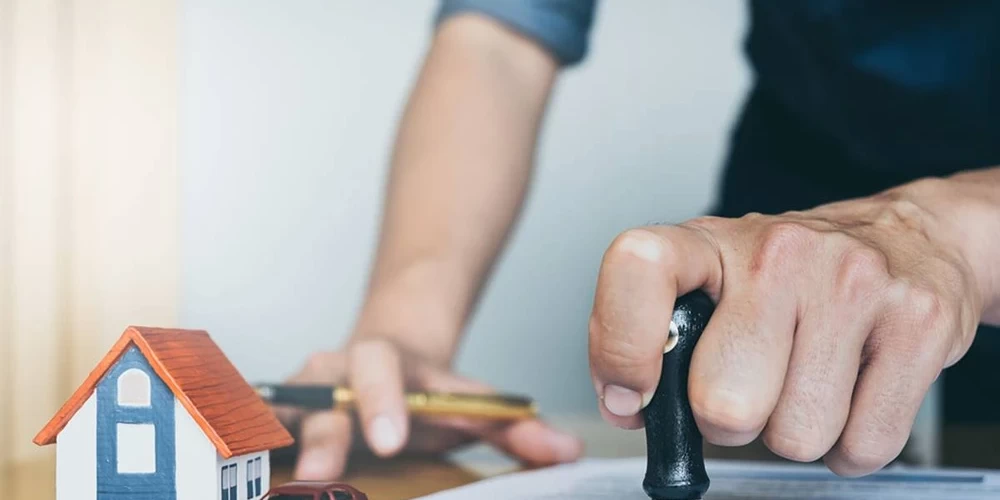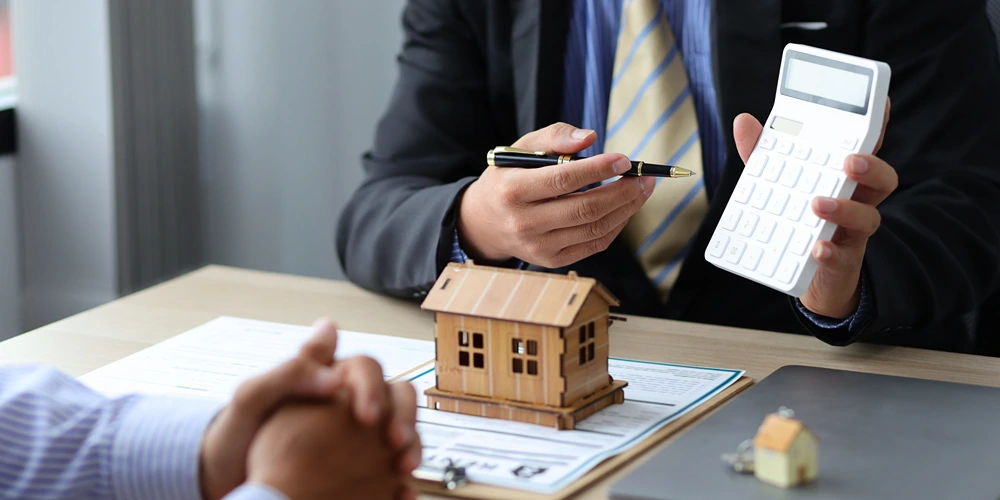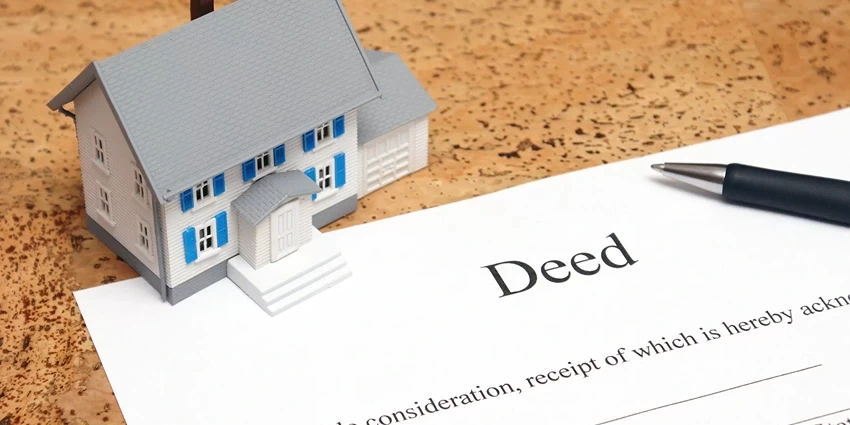Navigating the complexities of property tax can be daunting, but understanding how stamp duty works in Scotland is essential if you’re looking to buy a home or invest in property. Referred to as Land and Buildings Transaction Tax (LBTT), it’s Scotland’s twist on stamp duty, and knowing the ins and outs can save you time and potentially money. This article breaks down what LBTT is, how it’s calculated, and takes you through each step from liability to payment, ensuring you’re equipped to handle this financial aspect of property transactions with confidence.
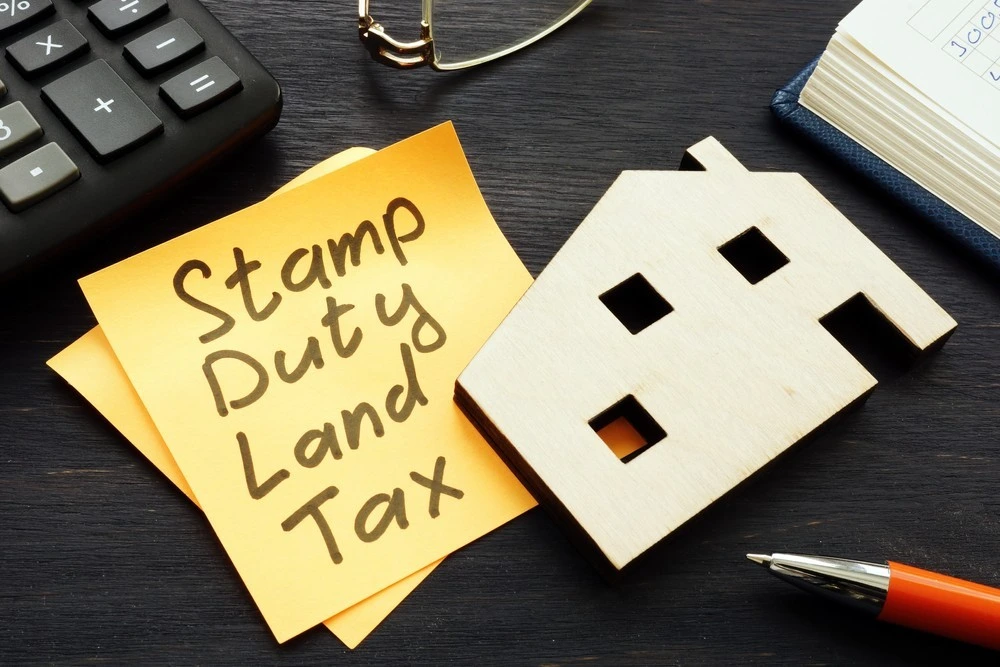
What is Stamp Duty in Scotland?
Are you buying property in Scotland? If so, you’ll need to know about land and buildings transaction tax (LBTT), Scotland’s version of stamp duty. LBTT is a tax applied to residential and commercial land and building transactions, including leases, in Scotland. Wondering how LBTT differs from Stamp Duty Land Tax in other UK regions? Let’s delve into those specifics.
What constitutes Land and Buildings Transaction Tax (LBTT)?
- LBTT is a progressive tax charged on property purchases in Scotland.
- It’s calculated based on the price of the property or land over a certain threshold.
- The more expensive the property, the higher the percentage of tax you’ll pay.
It’s important to use a stamp duty Scotland calculator to work out exactly how much LBTT you are liable for.
How does LBTT differ from Stamp Duty Land Tax in other UK regions?
- While LBTT and Stamp Duty Land Tax (SDLT) serve the same purpose, they are calculated differently.
- LBTT has different tax bands and rates compared to SDLT.
- Unlike the flat rates of SDLT, LBTT is calculated on a progressive scale, meaning the rate goes up in proportion to the property price.
Being aware of the differences between LBTT and stamp duty is crucial for your financial planning when engaging in property transactions in Scotland. Remember to always consult the latest LBTT rates and apply them correctly to avoid any surprises.
Who is Liable to Pay LBTT in Scotland?
When you’re buying a house in Scotland, it’s vital to know about the property tax you’ll be faced with, known as Land and Buildings Transaction Tax (LBTT). But who exactly is responsible for paying LBTT?
Which property transactions in Scotland are subject to LBTT?
- Residential property purchases over a certain threshold are liable for LBTT.
- Commercial property transactions, including leases, are also subject to this tax.
- In bulk purchases of residential properties, LBTT applies as well.
Every transaction is unique, so for the precise details, please visit Revenue Scotland, the tax authority that administers LBTT.
Are there any exemptions or reliefs from LBTT in Scotland?
Indeed, there are several situations where you can get a break from LBTT:
- First-Time Buyer Relief may apply if you’re entering the property market for the first time.
- For those purchasing new build homes under specific conditions, there may be applicable reliefs.
- There are also special reliefs for charitable bodies and certain types of transactions that benefit the community.
It’s crucial to consult with a professional or check directly with Revenue Scotland for current rules around exemptions and reliefs to ensure you’re not missing out on any savings.
In summary, while LBTT is an inescapable part of the property purchasing process in Scotland, understanding your liability, the available exemptions, and reliefs can help manage the financial aspect of your property transaction more effectively.
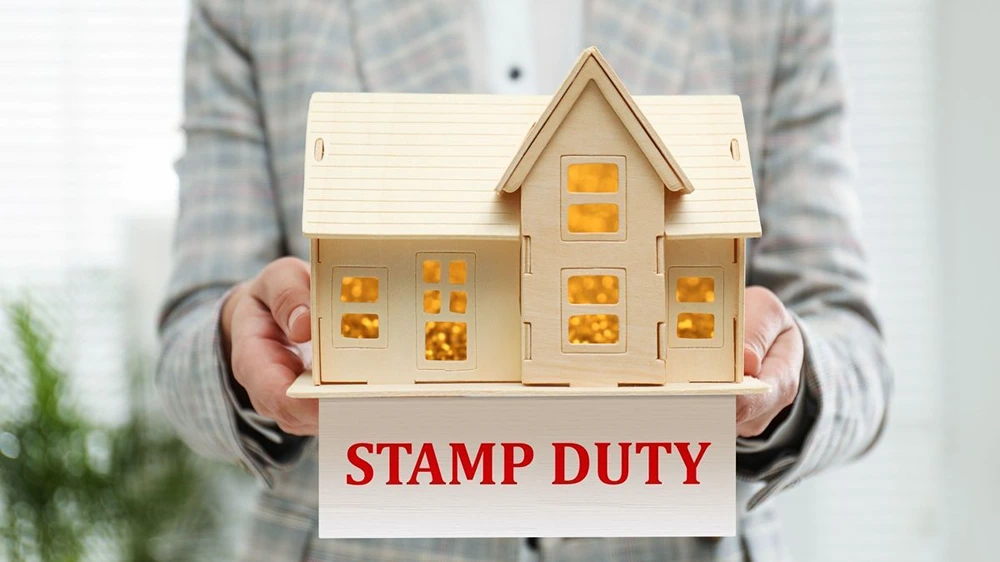
How are LBTT Rates Calculated?
When buying a property in Scotland, are you wondering what the Land and Buildings Transaction Tax (LBTT) rates are, and how they’re calculated? You’re not alone. Understanding LBTT rates is essential for budgeting the cost of your property purchase.
Current LBTT Rates and Bands
The current LBTT rates and bands vary depending on the price of the property. There are different thresholds set out, each with its respective rate:
- Up to £145,000: 0%
- £145,001 to £250,000: 2%
- £250,001 to £325,000: 5%
- £325,001 to £750,000: 10%
- Over £750,000: 12%
Calculating LBTT for residential properties is straightforward. The tax is applied progressively, much like income tax, meaning you pay the rate for each band on that portion of the property price.
Calculate LBTT for Different Property Values
To calculate the LBTT for various property values, follow these steps:
- Determine the purchase price of the property.
- Assign the portion of the price within each tax band.
- Apply the respective LBTT rate to each portion.
- Sum the totals from each band for the final LBTT amount.
For example, if you purchase a property for £260,000:
- The first £145,000 is taxed at 0% = £0
- The next £105,000 (£250,000 – £145,000) is taxed at 2% = £2,100
- The remaining £10,000 (£260,000 – £250,000) is taxed at 5% = £500
- Total LBTT due = £2,600
Remember, LBTT should be accounted for in your budget when considering property purchases, and the final figure must be paid within 30 days of completing the transaction.
By understanding these bands and rates, you can accurately predict the additional costs incurred when purchasing a property. Utilising online tools like the LBTT calculator can greatly assist in these calculations. Always check the latest rates, as they can change with government fiscal policy decisions.
What is the LBTT Payment Process?
When starting a property sale in Scotland, one of the crucial steps involves paying the Land and Buildings Transaction Tax (LBTT). But when and how do you pay LBTT, and what deadlines must you adhere to?
When and How is LBTT Paid in Scotland?
LBTT must be paid through Revenue Scotland, which is the tax authority responsible for its administration. The payment process typically follows these steps:
- Once the purchase of a property is completed, your solicitor will submit an LBTT return on your behalf.
- This needs to be done within 30 days of the transaction date.
- You must pay the LBTT due at the same time the return is submitted.
If you’re calculating the LBTT due for a property transaction, you can use the LBTT calculator provided by Revenue Scotland to get an estimate.
What are the Deadlines for LBTT Payments?
The deadlines for LBTT payments are strict, and it’s essential to meet them to avoid penalties:
- The LBTT return and payment are due no later than 30 days following the day after the date of the transaction (completion date).
- If you fail to submit the return and make the payment within this timeframe, Revenue Scotland may impose penalties and interest on the amount due.
Understanding the LBTT payment process is critical for anyone involved in purchasing property in Scotland. By knowing when and how to pay, and keeping the deadlines in mind, you can ensure a smooth and compliant property transaction.
How does LBTT Differ for First-Time Buyers?
Are you a first-time buyer in Scotland wondering about stamp duty? Unlike the rest of the UK, you won’t be dealing with Stamp Duty Land Tax (SDLT); instead, you’ll navigate the Land and Buildings Transaction Tax (LBTT), which includes specific reliefs for first-time purchasers.
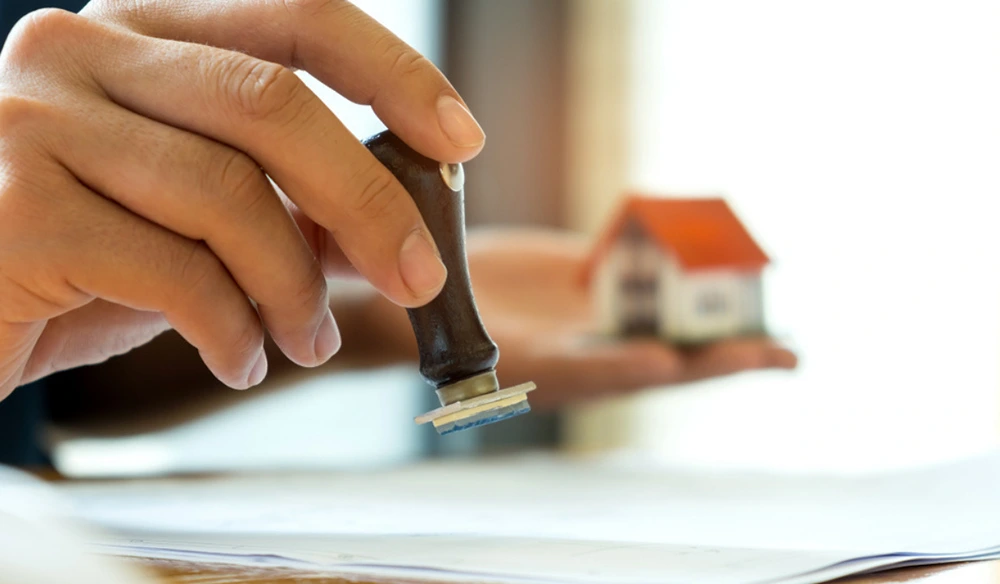
What Reliefs Are Available for First-Time Buyers under the LBTT Framework?
First-time buyers in Scotland benefit from the LBTT first-time buyer relief. This relief can exempt you from paying LBTT on properties up to a certain value. If the purchase price of your first home is below the threshold set by the Scottish Government, you may not have to pay any LBTT at all. You can learn more details and find the latest thresholds by visiting LBTT first-time buyer relief.
How Do First-Time Buyers Calculate Their LBTT?
Calculating LBTT is straightforward when you know the purchase price of the property. Here’s how you can do it as a first-time buyer:
- Determine if the purchase price is below the LBTT threshold for first-time buyers.
- If your home’s purchase price exceeds this threshold, you will only pay LBTT on the amount above it.
- Utilise an online LBTT calculator designed for first-time buyers to determine the exact amount you would need to pay.
Remember, buying your first home is a significant step, and understanding your tax obligations is essential. Take advantage of the relief provided and don’t hesitate to use online tools or seek professional advice to make sure you’ve got everything covered.
How is Additional Dwelling Supplement Calculated and Paid?
Are you considering purchasing a second home in Scotland or investing in a buy-to-let property? You may need to pay the Additional Dwelling Supplement (ADS) as part of your Land and Buildings Transaction Tax (LBTT). But what exactly qualifies as an additional dwelling, and how do you calculate and pay this supplement?
What qualifies as an additional dwelling for LBTT purposes?
- An additional dwelling is any residential property purchased that is not intended to be the sole or main residence of the buyer. This typically encompasses buy-to-let properties and second homes.
Calculation and payment of the Additional Dwelling Supplement
- The ADS is currently set at a rate of 4% of the total purchase price of the property, on top of the standard LBTT, and applies to properties costing more than £40,000.
- To calculate the amount you’ll owe, take 4% of the purchase price, ensuring the price falls within the threshold for the supplement.
For a comprehensive guide on the amendments to the Additional Dwelling Supplement legislation, you can refer to the Scottish Government’s official discussion document found here.
When you’ve calculated your ADS, payment is typically made at the same time and in the same process as your LBTT. It’s important to be accurate in your calculations and understand the payment process, as mistakes can lead to penalties.
To avoid pitfalls:
- Double-check if your property purchase falls within the scope of ADS.
- Use reputable online calculators and resources that consider both LBTT and ADS.
- Be mindful of timescales, as the ADS must be paid within 30 days of the date of the property purchase.
Remember, if you’re buying a property that qualifies as an additional dwelling, you’ll need to factor in this additional cost. Always consult with a property tax professional if you’re unsure about any aspect of paying LBTT or the Additional Dwelling Supplement in Scotland.
What are the Tax Implications for Property Investors and Developers in Scotland?
When you’re dealing in commercial property or if you’re a property developer in Scotland, understanding the Land and Buildings Transaction Tax (LBTT) is fundamental. It’s important to recognise that there are specific LBTT rules that apply to you, each with its own set of practical implications.

LBTT Considerations for Commercial Property Transactions
Whether acquiring office spaces, retail units, or industrial sites, the LBTT is an essential cost consideration for every commercial property transaction. Here’s what you need to know:
- LBTT is levied on the purchase price of commercial property over a certain threshold, with rates that vary depending on the property value.
- The tax is progressive, meaning higher-value transactions will fall into higher tax bands.
- It’s your responsibility to submit an LBTT return to Revenue Scotland, even if no tax is due.
Careful planning and a clear understanding of potential LBTT liabilities can significantly affect the overall cost of acquiring commercial property.
Special LBTT Rules for Property Developers and Investors
For property developers and investors in Scotland, LBTT can have a few additional twists:
- Developers may be eligible for relief if purchasing multiple dwellings, potentially reducing the LBTT payable.
- The sale of new buildings before their first occupation could qualify for the ‘sale of non-residential property’ tax rates, which can be different from residential rates.
- When buying land for development, the tax treatment will depend on the intended use of the land following development.
To avoid surprises and optimise your tax position, it’s crucial to consult an LBTT guide tailored for property developers.
Navigating the complexities of LBTT as a commercial property investor or developer can be challenging. By leveraging the information provided by the Scottish Fiscal Commission, through their comprehensive explainer on Land and Buildings Transaction Tax, you can ensure that you fully understand your tax obligations and opportunities in Scotland’s distinct tax landscape.
How Can You Access LBTT Tools and Calculators Online?
If you’re seeking to understand how much Land and Buildings Transaction Tax (LBTT) you may need to pay when purchasing property in Scotland, online tools and calculators are indispensable resources.
Where can you find these LBTT tools online?
A comprehensive LBTT calculator is available on the Revenue Scotland website, designed to help you assess potential tax liabilities for property transactions in Scotland. Here’s the calculator you can use.
- Visit the Revenue Scotland LBTT calculator webpage.
- Follow the prompts to input details about the property transaction, such as property price and whether it’s a first-time purchase or an additional dwelling.
- The calculator then estimates the LBTT due.
Understanding how to manage property-related finances is crucial, and these online tools make it easier to navigate the complex world of property tax. The guide to stamp duty – or LBTT – in Scotland helps to demystify the process. It walks users through the varying rates of tax and offers guidance on every step of the calculation process. When you use the Scottish land tax online calculator, remember:
- The results are estimates and should be confirmed with a solicitor or tax advisor.
- LBTT rates can change, so ensure you’re using the most current calculator available.
Working your way through a guide to stamp duty in Scotland is also recommended to gain comprehensive insight into LBTT. These guides typically cover everything from who is liable, to rates, exemptions, and reliefs – knowledge that could be financially beneficial in the long run.
Online LBTT resources are valuable for anyone involved in the Scottish property market, providing clear, actionable steps to help you understand and manage the costs involved in property transactions. Always use up-to-date, reliable calculators and resources to ensure the information you receive is accurate.
How does stamp duty work in Scotland?
When considering buying a house or acquiring property in Scotland, you might wonder, how does stamp duty work in this part of the UK? The straightforward answer is that in Scotland, traditional stamp duty has been replaced by the Land and Buildings Transaction Tax (LBTT).
But what is LBTT, and how does it differ from other UK regions? Here’s what you need to know about Scotland’s property tax system:
- Land and Buildings Transaction Tax (LBTT): Introduced in April 2015, LBTT is a progressive tax paid on residential and non-residential land and property transactions in Scotland. Unlike a flat tax rate, it applies variable rates depending on the price of the property, much like income tax does with personal income.
- Differences from Stamp Duty Land Tax (SDLT): While the rest of the UK operates under SDLT, Scotland’s LBTT is unique. It intends to be fairer, by ensuring that higher-value transactions result in more significant tax contributions. It is worth noting that Wales has its own version called Land Transaction Tax (LTT).
For a detailed breakdown and to calculate your potential LBTT, the Scottish Government provides online resources which can be found at land and buildings transaction tax.
In summary, if you’re buying a house or property in Scotland, you’re not paying the traditional stamp duty that you’d find in England or Northern Ireland; instead, you’ll be managing your purchase with the LBTT system, which is structured to be more considerate of the property’s value and in turn, aims to be more equitable for the buyer.
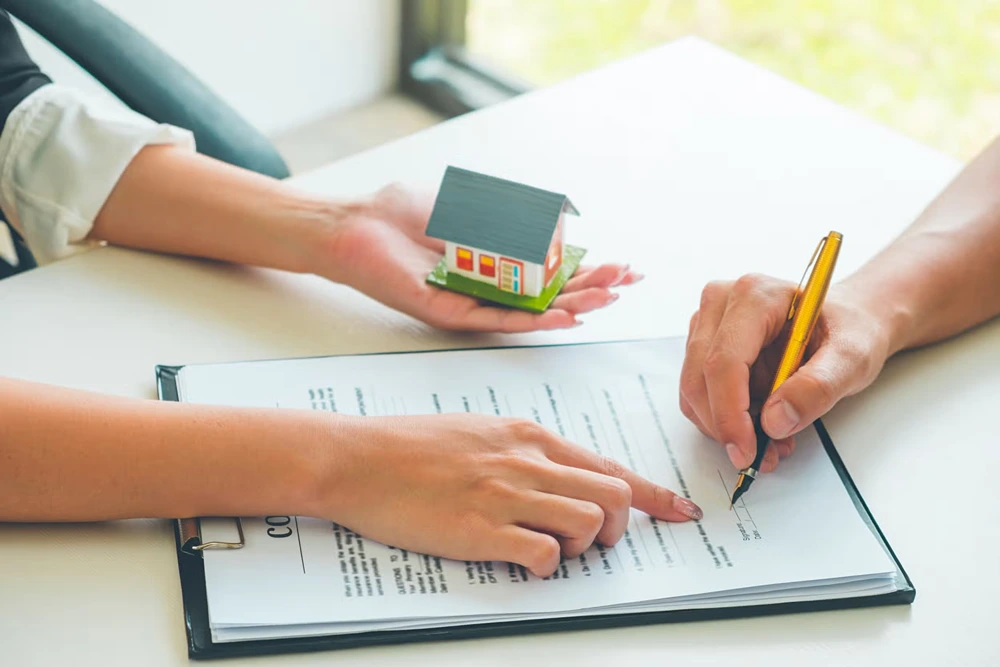
Conclusion
Navigating the complexities of Land and Buildings Transaction Tax (LBTT) can be daunting, but this guide has covered the essentials to equip you with the knowledge you require. By understanding what LBTT entails, who’s liable, and how it diverges from stamp duty in other UK regions, you’re ensuring you avoid any surprises during your property transaction in Scotland. Remember, whether you are buying your first home, investing in additional properties, or developing commercial real estate, being aware of the LBTT rates, how they are calculated, and when they need to be paid is crucial. Utilise the readily available online tools for a streamlined process. As you move forward, keep this expert advice and these strategies at hand for a more transparent and satisfying property sale experience.
FAQ
What is Land and Buildings Transaction Tax (LBTT) in Scotland?
LBTT is a progressive tax charged on property purchases in Scotland, calculated based on the property’s price over a certain threshold.
How does LBTT differentiate from Stamp Duty Land Tax (SDLT)?
Unlike SDLT’s flat rates, LBTT in Scotland is calculated on a progressive scale with different bands and rates, meaning the rate increases with the property price.
Who has to pay LBTT in Scotland?
Anyone purchasing residential property above a certain threshold, commercial property transactions, and bulk purchases of residential properties are liable to pay LBTT in Scotland.
Are there LBTT exemptions or reliefs available?
Yes, LBTT exemptions and reliefs are available in Scotland, including First-Time Buyer Relief, reliefs on new build homes, and special reliefs for charitable bodies and community transactions.
How are LBTT rates calculated and paid?
To calculate LBTT, identify the property’s purchase price, assign portions of the price to the relevant tax bands, apply respective rates, and sum the total. LBTT is paid through Revenue Scotland within 30 days of the transaction date.
What reliefs are available for first-time buyers under LBTT?
First-time buyers in Scotland may be exempt from LBTT for properties up to a certain value. If the purchase price is above this threshold, LBTT will only be due on the amount that exceeds it.
How is the Additional Dwelling Supplement (ADS) calculated and paid?
ADS is calculated at 4% of the entire property purchase price and paid via the same process as LBTT if the property costs more than £40,000 and is not the buyer’s main residence.
Do consult the respective calculators and guidelines provided by Revenue Scotland for the most current regulations, as these may have changed since the cut-off knowledge date.
Robbie Jamieson
Robbie’s passion for real estate extends beyond the conventional, bringing fresh and dynamic ideas to the table. His expertise in leveraging online platforms ensures that your home receives the attention it deserves in today’s competitive market.


